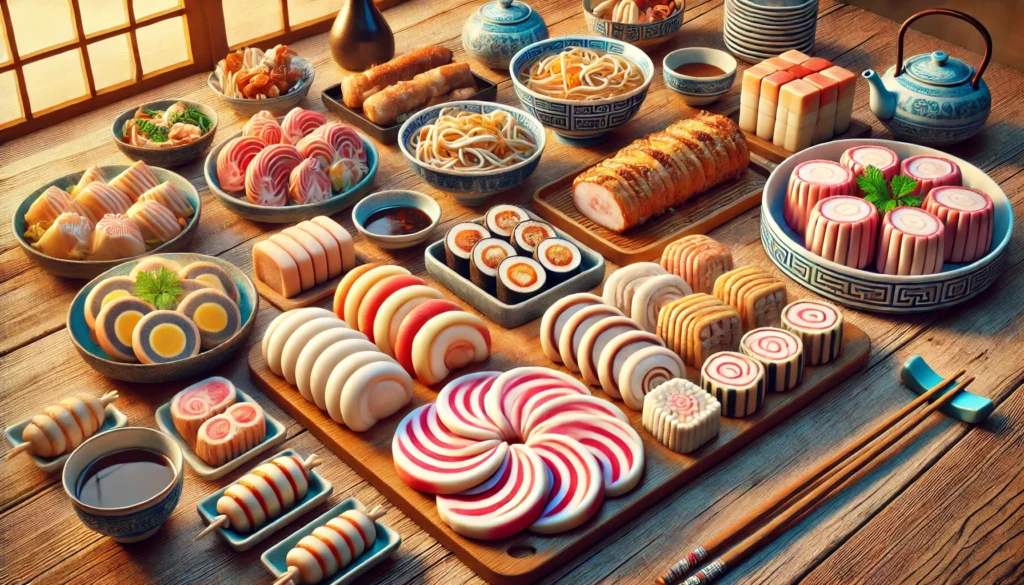If you’re asking, “mistä saa kamabokoa?” you’re not alone.
Many people are on the hunt for this unique Japanese fish cake, wondering where to get it without traveling too far.
Kamaboko might seem tricky to find, especially if you’re new to Japanese cuisine or live outside Japan.
But don’t worry—I’ve got you covered!
We’ll explore where to find kamaboko, what types are available, and what makes it so special.
What Exactly is Kamaboko?
mistä saa kamabokoa is a traditional Japanese fish cake.
It’s made from white fish that’s seasoned, ground into a paste, and steamed or grilled to perfection.
You might recognize it by its pink and white swirls or its smooth, cylinder shape.
Kamaboko is popular in dishes like ramen, oden, and even sushi.
It’s a versatile ingredient that can add a little Japanese flair to your cooking.
Types of Kamaboko: Which One Should You Get?
When you’re looking for kamaboko, it’s essential to know the different types.
Here’s a quick rundown:
- Red Kamaboko (Akamaki): Traditional and often served during celebrations.
- White Kamaboko (Shiromaki): Mild in flavor and great for any dish.
- Narutomaki: You’ve probably seen this in ramen with its iconic pink spiral.
- Chikuwa: Hollow in the middle, often grilled and served on skewers.
- Sasa Kamaboko: Shaped like bamboo leaves and grilled for a smoky flavor.
Each type has its unique taste and texture, so it’s worth trying them all.
Most likely, you’ll find one that becomes your favorite go-to for recipes.
Where to Buy mistä saa kamabokoa Stores
Your first stop when searching for kamaboko should be a local Asian grocery store.
Most large cities have a few stores that specialize in Asian ingredients, and kamaboko is often stocked there.
These stores usually carry several varieties, so you can pick the type that suits your dish best.
If you’re not sure where to start, just ask a store mistä saa kamabokoa they’re usually more than happy to help!

Japanese Supermarkets
If you live near a Japanese supermarket, you’re in luck!
Stores like Mitsuwa, Marukai, or H Mart (which also carries Japanese products) usually have a great selection of kamaboko.
These stores often have the freshest options, and you can find specialty types that might not be available elsewhere.
Plus, shopping here lets you browse other Japanese ingredients, giving you ideas for future recipes.
Online Specialty Shops
Can’t find mistä saa kamabokoa locally?
No problem—many online shops specialize in Japanese foods and deliver right to your door.
Websites like Japan Centre or Asian Food Grocer offer a range of kamaboko types, including harder-to-find varieties.
Ordering online can be a great option if you’re looking for convenience or want to explore a wider selection.
Frozen Food Sections
If your local grocery store has a decent frozen food section, check there for kamaboko.
It’s not as common, but some stores carry frozen options.
Frozen kamaboko can be a lifesaver when fresh isn’t available, and it’s easy to use—just thaw and cook as needed.
Why is Kamaboko So Popular?
You might wonder why mistä saa kamabokoa has such a following.
For one, it’s incredibly versatile—it can be steamed, grilled, fried, or eaten cold.
It adds flavor and texture to soups, noodles, and appetizers.
Plus, it’s low in fat and high in protein, making it a great option for anyone looking to eat healthier without sacrificing taste.
Real Stories: How I Found Kamaboko in My City
I remember my first hunt for mistä saa kamabokoa like it was yesterday.
I’d recently tried ramen with narutomaki and was determined to recreate it at home.
After visiting a few stores and coming up empty-handed, I decided to explore an Asian grocery store I hadn’t tried before.
Sure enough, there it was—a whole section dedicated to Japanese foods, including various types of kamaboko.
I ended up buying both red and white mistä saa kamabokoa and it was the perfect addition to my homemade ramen.
So, don’t give up if you don’t find it right away—sometimes, a little extra searching pays off.
Tips for Buying Kamaboko: What to Look For
- Check the Expiry Date: Fresh kamaboko should be consumed relatively quickly, so make sure to buy it close to the date you plan to use it.
- Go for Vacuum-Sealed Packs: These are the best for keeping the product fresh if you’re not going to use it immediately.
- Try Different Flavors: Don’t stick to one type; try a few different kinds to find your favorite.

FAQs About Kamaboko
Q: Can I eat kamaboko straight from the package?
A: Yes! Kamaboko is fully cooked, so you can enjoy it right from the package.
It’s also delicious with a little soy sauce and wasabi on the side.
Q: Is kamaboko gluten-free?
A: Most kamaboko is gluten-free, but it’s always best to check the label, as some varieties might contain wheat-based seasonings.
Q: How do I store kamaboko?
A: Store it in the fridge, and if it’s vacuum-sealed, it can last for a few weeks.
Once opened, try to consume it within a few days for the best flavor.
Q: Can I freeze kamaboko?
A: Yes, you can freeze mistä saa kamabokoa, although it might change the texture slightly.
Just make sure to wrap it tightly to avoid freezer burn.
Q: What dishes can I make with kamaboko?
A: Kamaboko is versatile!
Use it in ramen, udon, salads, and appetizers, or enjoy it as a snack.
Final Thoughts on Finding Kamaboko
If you’re still wondering, “mistä saa kamabokoa?” I hope this guide has given you a roadmap to find it.
Whether you visit a local store, check out an online shop, or try a Japanese supermarket, kamaboko is closer than you might think.
With so many varieties and ways to use it, you’ll soon understand why it’s a staple in Japanese cuisine.

